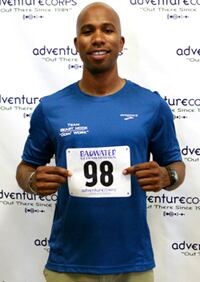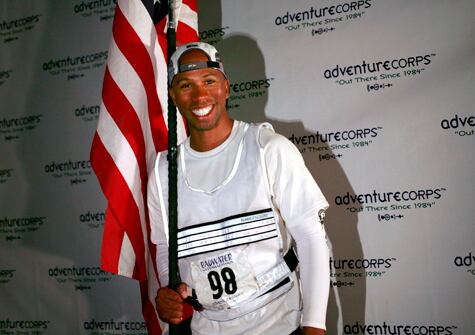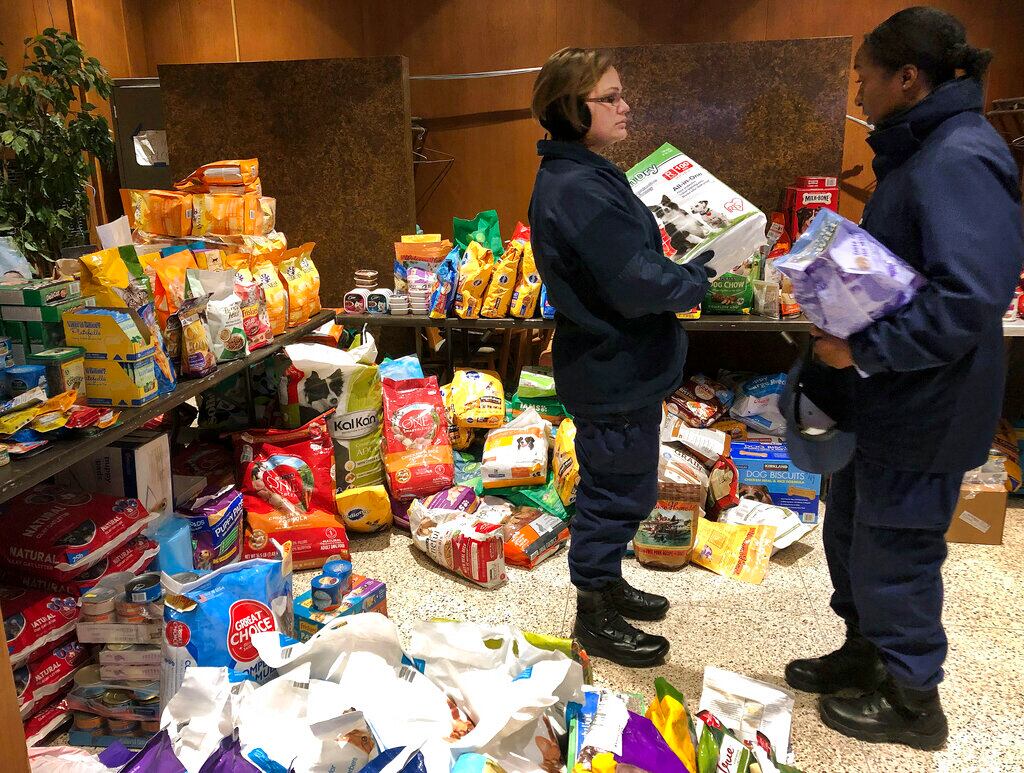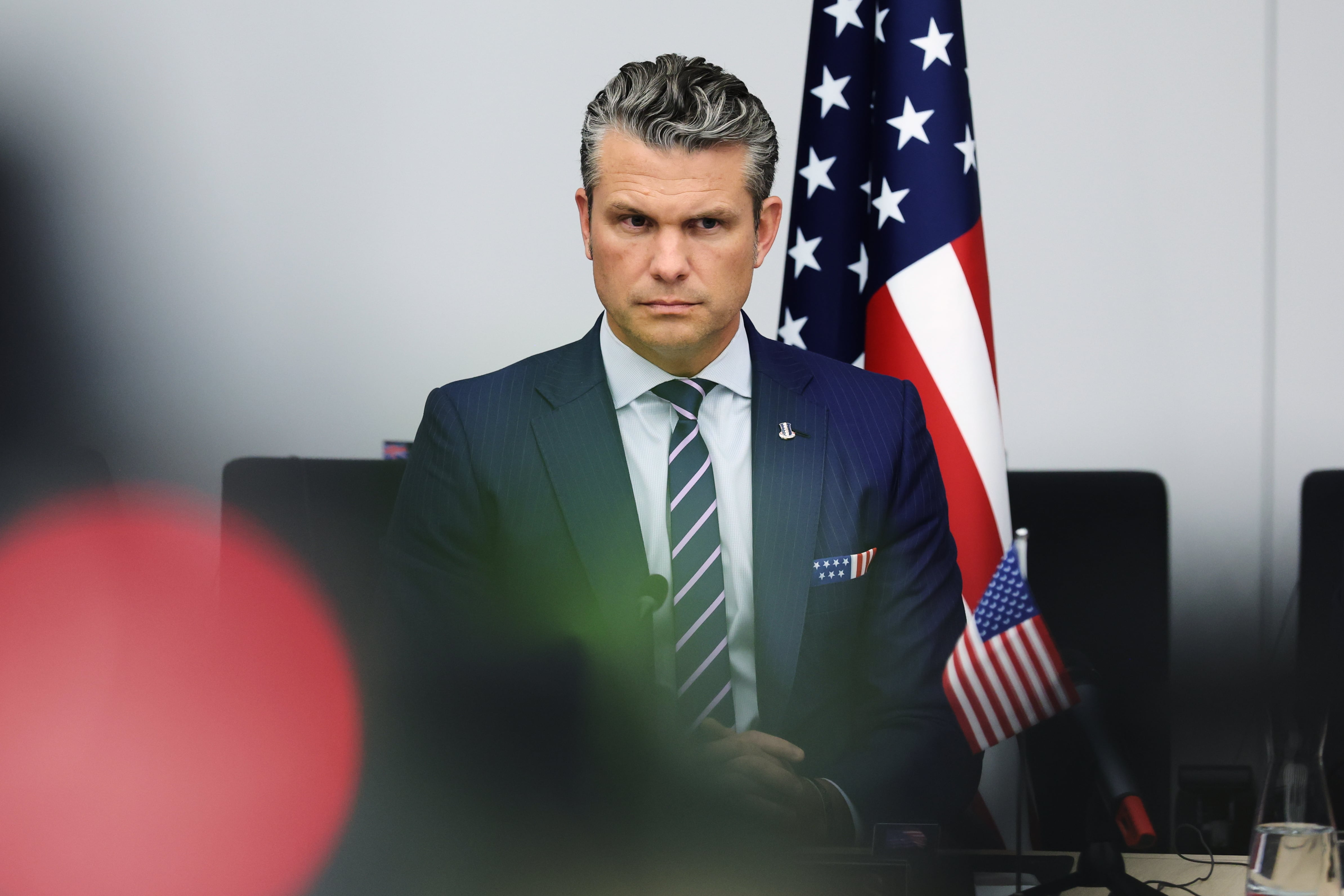Marine Corps Capt. Mosi Smith, 30, and I met earlier this year at the Holiday Lake 50k near Lynchburg, Va. We see each other occasionally at East Coast races, and I can tell you with near-certainty that this Marine never stops smiling. Ever.
For more on Mosi's journey to the Badwater 135-mile ultramarathon, click here.
During Badwater, I didn't get to spend as much time with Mosi and his crew as I would have liked, but when I saw them near the 100-mile mark Mosi was cracking jokes, jumping around and playing tricks on his pacer. I teased him that if he had that much energy, he could probably move a little faster, which got me a laugh.
As with Army 1st Lt. Claire Heid, I asked Mosi to send me some feedback on his race -- what he learned or what surprised him about Badwater. He writes:
I have spent the past couple of weeks reflecting, drafting and re-drafting my thoughts on Badwater. I can honestly say my thoughts have drifted to building upon this experience, continuing to learn and grow in this sport and returning to Badwater to push personal performance. Provided below are a few themes that I pulled from the experience.

mosi_200
Teamwork
The most critical aspect of this race was having a solid crew in my corner. Tricia Jackson, Arylis Scates, May Wedlund, Kevin Booher and David Huckobey are stellar people. I was initially concerned how everyone would mesh, but the synergy was palpable as we shared our first meal together during the days prior to the race. Team BeastMode was engaged. Over the course of our time in the desert, we became a singular organism with the sole focus of constant progression. Drive, stop, refuel, cool-off, pack up and move … for hours and hours on end. Their enthusiasm fueled my spirit. My playfulness fueled their morale. With the breadth of racing and crewing experience among the collective, I knew I was in good hands from start to end.
Visualization
I am a big proponent of visualization. If one can imagine an outcome, the belief in one's self with respect to the task grows and the likelihood for success increases. I have a couple pieces of what could be considered art hanging in my apartment: a map of the Badwater course and a vision board. I created the image board in 2008 piecing together various, motivating images from triathlon and running magazines. Each morning, I wake up to see this and remind myself that the adventure is out there, and that I should continue striving to be a better version of myself. The Badwater map served as a mental reminder of the components I needed to become familiar with: heat, hills and distance. I chunked the course into mentally manageable portions (Badwater to Furnace Creek, the climb to Townes Pass, the Panamint Valley traversal to Father Crowley, the haul to Lone Pine and finally the climb to Whitney Portal). By the time race-day arrived, I felt that I had mentally covered the course so many times that I just needed to incorporate sound execution.
Learn & Listen to Your Body
Coming off of Western States, I was very cautious with the mileage for two reasons: This was the smallest window of rest (three weeks) between 100-milers and I felt I needed to stave off any potential overuse injuries. When Chris Kostman started our wave, I felt like a thoroughbred coming out of the gate. I took advantage and ran faster than intended for the first legs to Stovepipe Wells. I felt as if my body was constantly demanding fluid intake and I obliged. My appetite attacked after slowing down at Stovepipe and persisted through to the end, and I obliged. I never felt the deep, mental low points associated with lapses in nutrition. I thank my crew for staying on top of this as well.
Community
The sense of kinship is something I view as a commonality between the military society and the tribe of ultrarunners. Often, we place ourselves in austere environs with the same objective: to accomplish the mission and reach the finish line. We learn a lot about ourselves along the way. But the most salient sentiment is that we do not achieve anything alone. We sacrifice hours in training and preparation. Yet we are supported via crews, race personnel and fellow athletes on race-day. The one anecdote I can point to at Badwater occurred at about the 86th mile a few miles prior to reaching the Death Valley National Park boundary. My Achilles became my critical vulnerability. Throughout the previous night, I was calculating the viability of arrival times at Mount Whitney if I had to continue moving forward at two miles per hour due to my inability to place significant weight on my right foot. Lisa Smith-Batchen, a legit Badwater badass, was crewing for another competitor when Tricia made her aware of my situation. Lisa sent her team doc to check me out and within minutes of arrival and taping, I felt like a new man and shot off down the road like a possessed, devil dog. What I find remarkable about this sport is that situations like this are commonplace. Simply put, it is people helping people to move forward. It's why I feel compelled to continue participating and contributing back to ultrarunning.
[Mosi added later that the tape guru was Matt Nelson, a retired Marine.]

mosi3_475
Semper Fi Fund
Mosi and fellow Marine Corps Capt. Robert Hillery are in the middle of a long-term fundraising campaign to raise money and awareness for the Semper Fi Fund. So far they've raised just under $20,000. Here's what the boys have to say on their donation page:
Our goal is $1 million! Very ambitious we know, but through the power of networking and mass communication we hope to achieve our goal for our Wounded Warriors through the Semper Fi Fund. The Fund (www.semperfifund.org) is a non profit organization that helps America's true heroes recovering from catastrophic injury. 100% of the donations go to help injured Marines.
To learn more, of if you're like to donate, please visit the 1 in 10 campaign page.
Need more Badwater? Check out all our coverage here.





